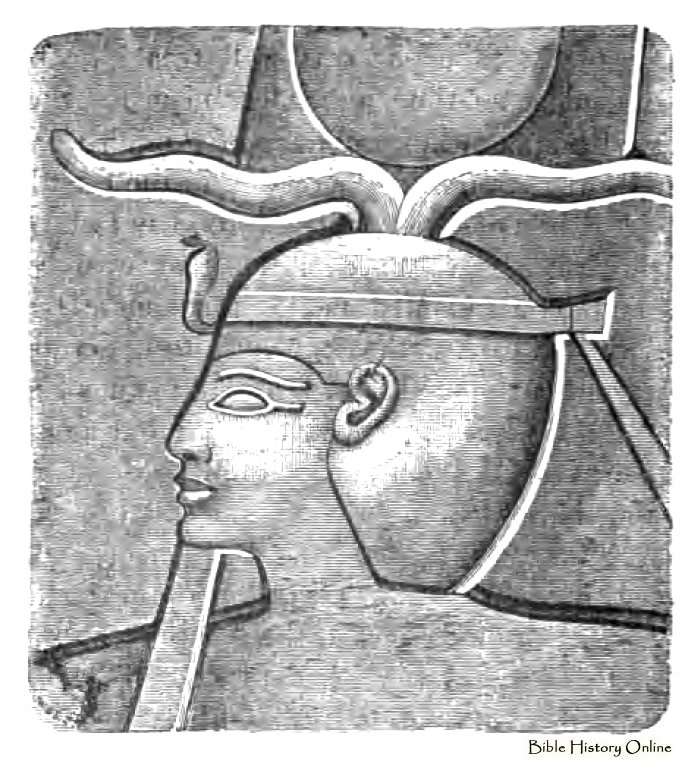Shishak (Sheshonq I): Egyptian King Who Invaded Judah And United Egypt
A. Sutherland - AncientPages.com - Shishak (Shishaq), later identified with the pharaoh Shoshenq I, was an Egyptian pharaoh who sacked Jerusalem in the 10th century BC, according to the Hebrew Bible.
Who Was Shishak – Sheshonq I?
Shishak (it was his Biblical name) was an official of a Semitic family and a Libyan chieftain. His family was long settled in Egypt, and had particular associations with the town of Bubastis, which became their residence. Shishak’s grandfather (he had the same name) obtained his higher position through the intermarriage leading directly to the royal house.
"His father Namrut, had held a high military office, being commander of the Libyan mercenaries, who at this timeformed the most important part of the standing army. Sheshonk himself, thus descended, was naturally in the front rank of Egyptian court-officials.
When we first hear of him he is called “ His Highness,” and given the title of “ Prince of the princes,” which is thought to imply that he enjoyed the first rank among all the chiefs of mercenaries, of whom there were many..." we read in George Rawlinson's book "Ancient Egypt".
During the rule of Shishak/Sheshonq I, Egypt was united and he understood that he must act effectively and quickly to become a legitimate pharaoh. Besides, he married an Egyptian princess, Maatkare, a daughter of Psusennes II, the last pharaoh in the 21st dynasty and thus, he forged another important marriage tie. It obviously helped his son to hold the title of high priest of Amun.
With a strong ruler, Shisak/Sheshonq I, began the sequence of Libyan chiefs who were to rule Egypt for the next two centuries. He brought the divided faction Tanis and Thebes together into a once again united Egypt.
He made also possible for his sons to get prominent high offices and thus, he stabilized Egypt’s political situation.
Shishak's Campaign Against Kingdom Of Judah And His Sack Of Jerusalem
According to the Hebrew Bible, Shishak had provided refuge to Jeroboam, the first king of the northern Kingdom of Israel who ruled c. 943–922 BC) during the later years of Solomon's reign.
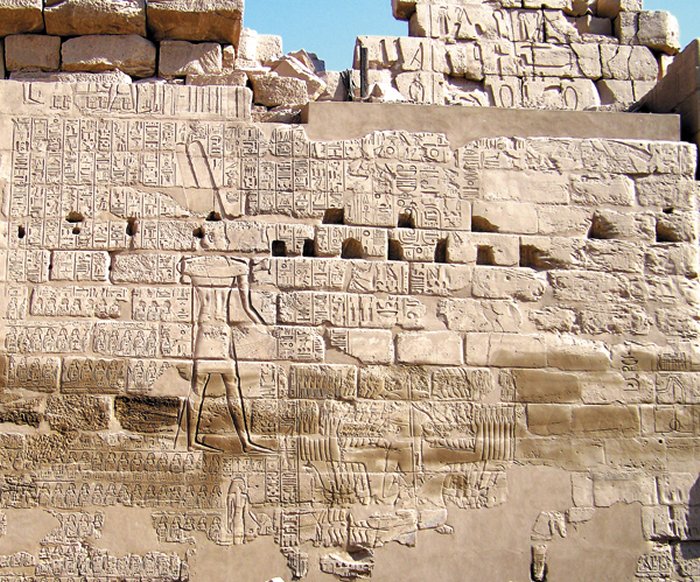
The Bubastite Portal includes a large weathered relief in which the pharaoh lists more than 150 towns and peoples he conquered during his military campaign into Israel and Judah in c. 925 B.C.E. Photo: © Regents of the University of California/Courtesy the Digital Karnak Project. Image via Biblical Archaeology.org
Following the death of Solomon in 930 BC, the kingdoms of Judah and Israel under Rehoboam (Solomon's son) and Jeroboam I, respectively, were not able to offer much resistance to Shishak’s approaching army.
Shishak, king of Egypt, attacked the Kingdom of Judah with a huge and powerful army of 60,000 horsemen and 1,200 chariots, in support of his ally Jeroboam, the king of Israel. According to 2 Chronicles 12:3, he was supported by the Lubim (Libyans), the Kushites, and the Sukkiim, an ancient African nation.
These important events took place in the 5th year of the reign of Rehoboam, a son of and the successor to Solomon, and a grandson of David. Rehoboam managed to build fifteen fortified cities, which means that the attack of the Egyptian ruler was not totally unexpected.
Shishak's campaign against the Kingdom of Judah (which is documented with a stele discovered at Tel Megiddo) and his sack of Jerusalem is mentioned in the Hebrew Bible (2 Chronicles 12:1-12 and 1 Kings 14:25:
“In the fifth year of King Rehoboam, Shishak king of Egypt attacked Jerusalem. He carried off the treasures of the temple of the Lord and the treasures of the royal palace. He took everything, including all the gold shields Solomon had made…”
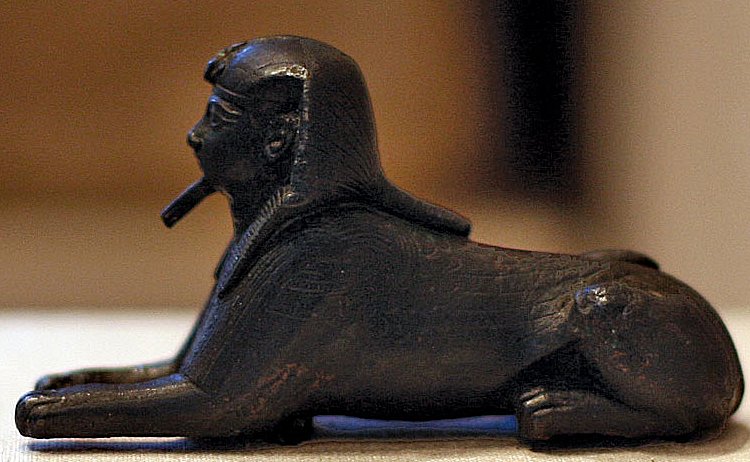
Sphinx of king Shoshenq I, Brooklyn Museum, New York City. Image credit: CC BY-SA 2.0
Rehoboam had to replace them with the brass ones.
According to "Antiquities of the Jews" written by Flavius Josephus (37 – c. 100), a first-century Romano-Jewish scholar, historian, and hagiographer, who was born in Jerusalem—then part of Roman Judea, the invading army met with no resistance throughout the campaign, taking Rehoboam's most fortified cities "without fighting."
Many believe that Shishak did not destroy Jerusalem but was bought off from entering it by being given all the treasures. Thus Jerusalem was spared destruction because Rehoboam paid tribute to Shishak.
2 Chronicles 12:8 confirm that the city does not appear to have been sacked: nor was there any destruction. Rehoboam was maintained in his kingdom, but he had to become pharaoh’s servant.
Except for biblical records, there is also a monument declaring Shishak’s victory and naming those 50 cities the Pharaoh captured. This monument can be found at the temple of Amun in Karnak. The exact number of cities captured by Shishak is still debated and so is the Bubastite Portal, a relief discovered at the temple of Amun in Karnak, in Upper Egypt.
It shows the cartouches of Shishak/Sheshonq I and his historical military campaign. In fact, the relief makes no mention of Jerusalem being sacked, nor of the king Rehoboam or Jeroboam.
He was succeeded by his son Osorkon I after a reign of 21 years. No trace has yet been found of his tomb. The sole funerary object related to Shoshenq I is a canopic chest of unknown provenance that was donated to the Egyptian Museum of Berlin by Julius Isaac in 1891.
Does it mean that his tomb was looted in antiquity? There are speculations regarding the tomb's location. Is he buried in Tanis or perhaps in Bubastis?
Written by – A. Sutherland - AncientPages.com Senior Staff Writer
Copyright © AncientPages.com All rights reserved. This material may not be published, broadcast, rewritten or redistributed in whole or part without the express written permission of AncientPages.com
Expand for referencesMore From Ancient Pages
-
 New Clues To Behavior Of Neanderthal Hunting Parties
Archaeology | Mar 27, 2023
New Clues To Behavior Of Neanderthal Hunting Parties
Archaeology | Mar 27, 2023 -
 Vikings Visited America 1,000 Years Ago – Solar Storm And Archaeology Confirm Icelandic Sagas
Archaeology | Oct 22, 2021
Vikings Visited America 1,000 Years Ago – Solar Storm And Archaeology Confirm Icelandic Sagas
Archaeology | Oct 22, 2021 -
 Unexplained Accounts Of Mysterious Fires – No Traces But It Happened – Part 2
Featured Stories | Aug 6, 2019
Unexplained Accounts Of Mysterious Fires – No Traces But It Happened – Part 2
Featured Stories | Aug 6, 2019 -
 Blackfoot People Carry DNA From Unknown Ancestors Who Came To America 18,000 Years Ago
DNA | Apr 4, 2024
Blackfoot People Carry DNA From Unknown Ancestors Who Came To America 18,000 Years Ago
DNA | Apr 4, 2024 -
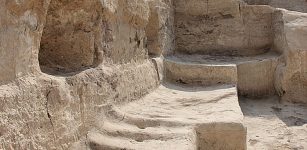 Ancient Adobe Throne Found At Aslantepe, An Acient Hittite Site, Turkey
Civilizations | Aug 29, 2015
Ancient Adobe Throne Found At Aslantepe, An Acient Hittite Site, Turkey
Civilizations | Aug 29, 2015 -
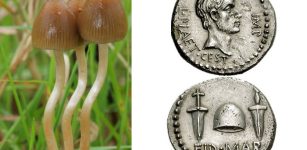 Strange Tale How The Liberty Cap Mushroom Got Its Name Starts In Ancient Rome
Featured Stories | Sep 3, 2023
Strange Tale How The Liberty Cap Mushroom Got Its Name Starts In Ancient Rome
Featured Stories | Sep 3, 2023 -
 Did Richard The Lionheart Order Assassins To Kill Conrad Of Montferrat, King Of Jerusalem?
Featured Stories | Dec 27, 2018
Did Richard The Lionheart Order Assassins To Kill Conrad Of Montferrat, King Of Jerusalem?
Featured Stories | Dec 27, 2018 -
 2,700-Year-Old Ceramic Sculpture Of Goddess Found In Aegean Sea
Archaeology | Feb 28, 2017
2,700-Year-Old Ceramic Sculpture Of Goddess Found In Aegean Sea
Archaeology | Feb 28, 2017 -
 Perchta: Evil Witch Of The Alps – An Old Tradition That Still Continues
Ancient Traditions And Customs | Dec 15, 2019
Perchta: Evil Witch Of The Alps – An Old Tradition That Still Continues
Ancient Traditions And Customs | Dec 15, 2019 -
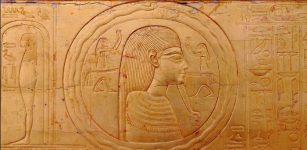 Ouroboros: Ancient Infinity Symbol Used By Different Ancient Civilizations
Ancient Symbols | Oct 3, 2017
Ouroboros: Ancient Infinity Symbol Used By Different Ancient Civilizations
Ancient Symbols | Oct 3, 2017 -
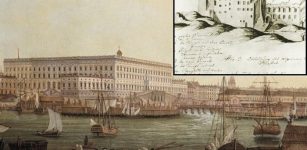 On This Day In History: Fatal Fire Broke Out In Tre Kronor “Three Crowns” Castle, Stockholm, Sweden – On May 7, 1697
News | Dec 7, 2021
On This Day In History: Fatal Fire Broke Out In Tre Kronor “Three Crowns” Castle, Stockholm, Sweden – On May 7, 1697
News | Dec 7, 2021 -
 Campus Mounds Are The Oldest Known Human-Made Structures In North America – New Research Shows
Archaeology | Aug 22, 2022
Campus Mounds Are The Oldest Known Human-Made Structures In North America – New Research Shows
Archaeology | Aug 22, 2022 -
 Did Two Daughters Of Akhenaten Rule Together Under One Name Before Tutankhamun?
Archaeology | May 1, 2019
Did Two Daughters Of Akhenaten Rule Together Under One Name Before Tutankhamun?
Archaeology | May 1, 2019 -
 What Was The Agriculture Like In Southeast China In The Late Neolithic?
Archaeology | Apr 11, 2022
What Was The Agriculture Like In Southeast China In The Late Neolithic?
Archaeology | Apr 11, 2022 -
 Mysterious 2,000-Year-Old Disco Colgante – Unknown High-Tech Device, Representation Of A Spiral Galaxy Or Something Else?
Artifacts | Nov 20, 2020
Mysterious 2,000-Year-Old Disco Colgante – Unknown High-Tech Device, Representation Of A Spiral Galaxy Or Something Else?
Artifacts | Nov 20, 2020 -
 Hiawatha And The Legendary Great Peacemaker – Native American Heroes Who Founded The League Of The Iroquois
Featured Stories | Feb 25, 2019
Hiawatha And The Legendary Great Peacemaker – Native American Heroes Who Founded The League Of The Iroquois
Featured Stories | Feb 25, 2019 -
 Lesicheri Obelisk – Enigmatic Ancient Roman Structure – Bulgaria’s Tallest Surviving Landmark
Featured Stories | Jan 24, 2023
Lesicheri Obelisk – Enigmatic Ancient Roman Structure – Bulgaria’s Tallest Surviving Landmark
Featured Stories | Jan 24, 2023 -
 Sir Marc Aurel Stein: Famous Fascinating Expeditions To Ancient Places Of The Silk Road
Civilizations | Feb 11, 2016
Sir Marc Aurel Stein: Famous Fascinating Expeditions To Ancient Places Of The Silk Road
Civilizations | Feb 11, 2016 -
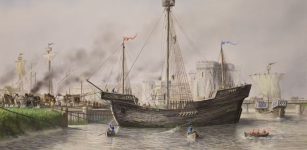 Newport Ship: Experts Reassemble Medieval Vessel Found In The Mud
Featured Stories | Feb 7, 2023
Newport Ship: Experts Reassemble Medieval Vessel Found In The Mud
Featured Stories | Feb 7, 2023 -
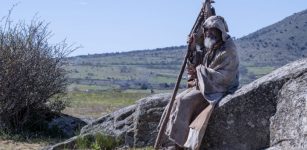 Enigma Of Étienne Le Ray – Unusual Vagabond Prophet Nicknamed Nostradamus Of Brittany
Featured Stories | Sep 28, 2020
Enigma Of Étienne Le Ray – Unusual Vagabond Prophet Nicknamed Nostradamus Of Brittany
Featured Stories | Sep 28, 2020

